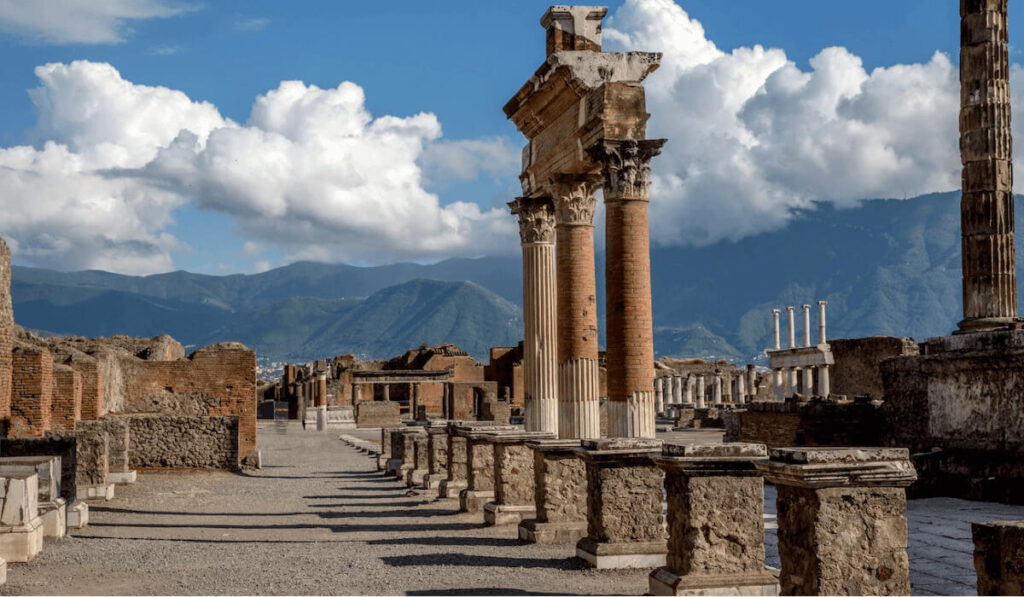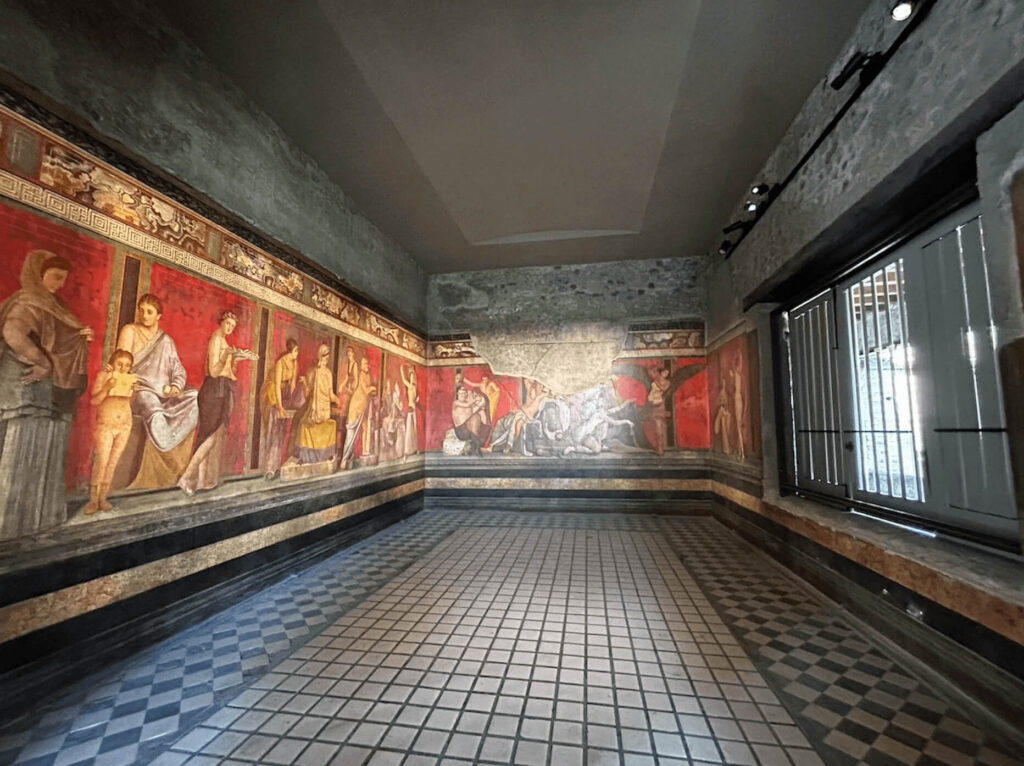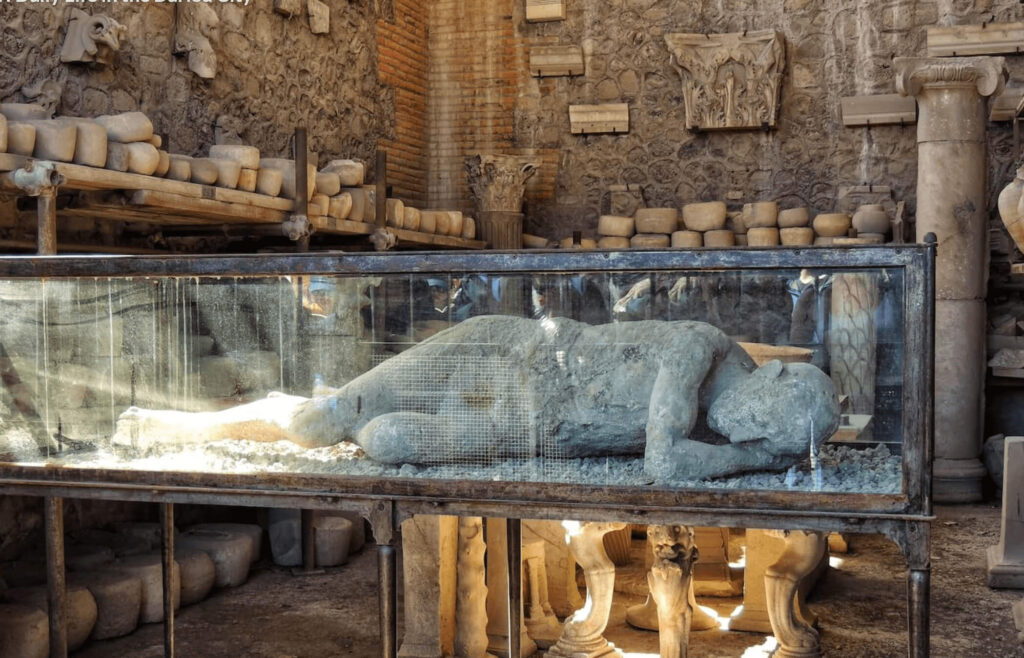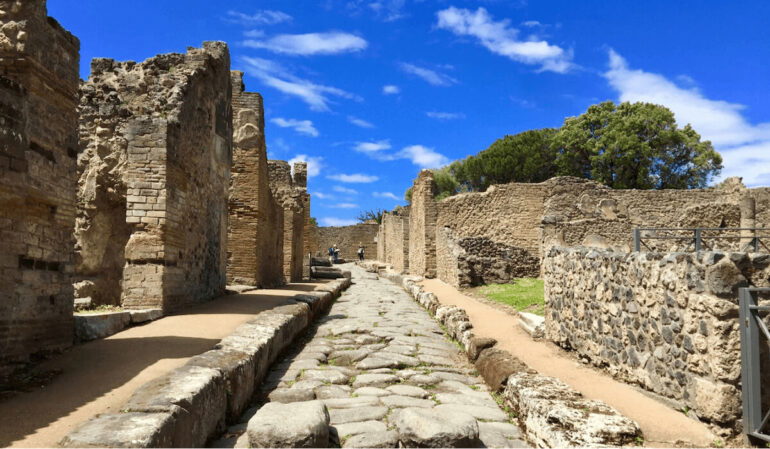A day trip to Pompeii is a portal to another time.
Nestled beneath the gaze of Mount Vesuvius lies a city frozen in time, bearing the scars of a catastrophic eruption that forever changed its destiny.
Pompeii, the ancient Roman city, is an eternal tie between the past and present, and it has always been on my bucket list. Even if you are not a history lover, you might still be captivated by its haunting ruins and stories behind those remaining frescoes that reveal glimpses of daily life from millennia ago.

Getting to Pompeii from Rome
For many travelers, taking the train from Rome to Pompeii is the preferred mode of transportation. Italy’s efficient rail network offers high-speed connections between major cities, making it easy to reach Naples, the nearest city to Pompeii, in just over an hour from Rome’s Termini station.
Once in Naples, travelers can transfer to the Circumvesuviana commuter train, which departs from Naples’ central station, Napoli Centrale. The Circumvesuviana line connects Naples to Sorrento, with stops at Pompeii Scavi – Villa dei Misteri, the station nearest to the archaeological site.
The journey from Naples to Pompeii takes approximately 30 minutes, offering a scenic ride through the picturesque countryside of Campania.
Highlights of Pompeii
As I wandered through the streets of Pompeii, I was struck by the sheer magnitude of the site. Everywhere I looked, there were remnants of a once-thriving city: crumbling walls, weathered columns, and intricate mosaics that spoke volumes about the lives of its inhabitants.
It is highly recommended to get a map of Pompeii from the information desk since it covers around 440,000 square meters.
One of the remnants that strikes me the most is the Suburban Bath. The changing room inside the house still has visible Roman numbers where bathers could place their clothes before entering the cold room. And on a wall, seven paintings of sexual scenes are depicted, suggesting that homosexuality already existed back then, and people would not have found such erotic scenes offensive.
Further inside the house is the tepidarium, or warm room, one can easily imagine Roman bathers reclining on marble benches, soaking in the heat of the hypocaust system that once warmed the floor.

Visitors will find countless pieces of artwork and remaining buildings inside the city that make them wonder: how did the Romans come up with these ideas thousands of years ago? Each design carries its own importance and meaning: the Forum, which is the heart of ancient Pompeii, resonates with echoes of political discourse and public gatherings, while the amphitheater echoes with the cheers of the crowds including the peasants and elites.
With the Pompeii Plus ticket, I was able to visit three suburban villas on the outskirts of Pompeii. Stepping into the Villa of Mysteries is like entering an exclusive retreat that is isolated from the rest of the world. It extends beyond the city walls and commands a spectacular view over the Gulf of Naples.
One of the most striking frescoes found within the Villa of the Mysteries is the famed Dionysian Mysteries cycle. This series of paintings portrays the practice of the Dionysian cult, a secretive religious sect dedicated to the worship of the god Dionysus. Through intricate symbolism and vivid imagery, the frescoes depict scenes of revelry, ecstasy, and transformation, inviting us to contemplate the mysteries of ancient religious practices.
After wandering around the ruins of Pompeii for 5 hours, I took a last look at Mount Vesuvius that rises majestically above the sun-drenched plains before catching the train back home. Who would have thought that this tranquil landscape would become a testament to the fragility of human civilization.

Pompeii is more than just a historical site: it is a portal to another time and place where the secrets of the ancient world are waiting to be discovered. From the bustling cobblestone streets of the ancient city to marvelous temples and interior designs to various styles of frescoes, visitors are able to witness the legacy of Pompeii and the beliefs of its people. Amidst the ruins of a lost civilization, we are reminded of the fragility of life and the shortness of existence.
Meeting point:
Viale Luigi Einaudi
Duration:
12 hours
Starting time:
7:30am






